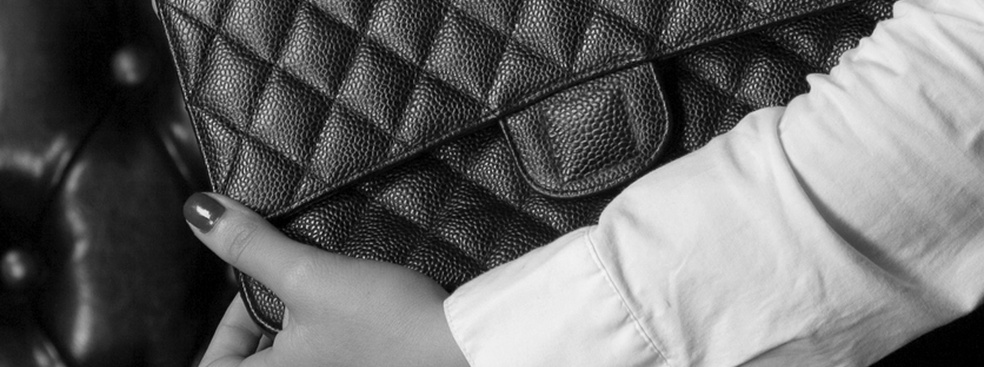Ashok Som, Professor of Global Strategy at ESSEC Business School and Co-Director of the ESSEC-Bocconi EMiLUX program, looks into the constant evolution of the global luxury market and contends that this disruption provides enigma – enough to make the luxury industry stay and prosper. Based on research for the book The Road To Luxury: The Evolution, Markets and Strategies of Luxury Brand Management, by Ashok Som and Christian Blanckaert.
___
There is no single definition of luxury, although there may be timeless attributes accredited to the luxury product or service. The definition is in the mind of the connoisseur of luxury goods. And that definition is dynamic: for what is luxury today for some may not be luxury for others, and with time may even not be considered as luxury by anyone at all.
The shifting nature of the interpretation of how we see luxury makes luxury enigmatic per se. Moreover, it is this – an almost magical element – that accounts for the fact that luxury goods have prospered in time and will continue to do so as the world undergoes increasingly rapid and disruptive change.
The people’s love for elite products
With any enigma, any soupçon of opinion, there is always some element of truth. If we peer deep into the luxury enigma in search of that truth, we fall upon its historical perspective. History allows us to establish certain empirical truths, answer the question of whether such an industry can stand the test of time, especially during the age of digital and technological disruption, and determine more or less if the new luxury brands can survive in such an environment.
But has the luxury industry indeed changed over time? Contextually, in every era luxury is about selling a dream, it is about creating a desire. It is aspirational. In essence, desire means wanting to feel special, wanting to feel like you belong to a special set of people. Only the elite could enjoy elitist Roman baths or purchasing high-quality wool from the British Isles for fashionable clothing. Only the elite could access products from the Silk Road and its flow of gems, silks and spices from China and India. In modern times, even the simple act of purchasing a Hermès scarf or a Moncler goose down coat is also highly exclusive. This sense of being special has not changed since time immemorial.
The ‘luxury of purchasing luxury’ goes hand in hand with commerce. Indeed, the ancient trading routes across empires provide the first evidence of globalization in luxury. And what made it luxury is that the items being traded were not actually part of daily living. The goods that traveled across countries and continents were things that people didn’t actually need to survive, but desired anyway. This is the true essence of luxury, creating demand for something for which there is no need. Excess, one might say, or – as the Romans termed – luxus, hence luxury.
And even these early commercial routes were subject to change, the decline in trading occurring through a shift, over several centuries, to more convenient and above-all safer routes across land and sea. In this respect, things ultimately remain the same: shift happens. Luxury endured yesterday, as it does today, and as it will do tomorrow: throughout time. Luxury brings with it changes, challenges, and uncertainties, as well as the occasional cyclic returns of older trends: it’s all of this that makes luxury so enigmatic, and so often beyond our grasp.
20th century fox: craft, fur, coats, bags and blockbusters
It was in the late 19th and early 20th centuries that many of today’s leading luxury brands were born as family businesses, with Louis Vuitton, Hermes and Chanel being three examples among many. The social context was one where a strict social class system defined society, and royalty and aristocracy reigned supreme. It was during this period that designers such as Dior, Yves Saint Laurent and Gucci came to light producing ‘art’: fur, coats, and leather goods that took many weeks to craft, thereby adding to the luxury prestige experience.
And then, once again, the world changed as it grew out of post-war rebuilding towards the inklings of the technological revolution of the late 1960s, and from there into the telecom revolution in the 1980s, and finally to the digital revolution of today. Over the last three or four decades, a vast amount of wealth has been accumulated by individuals striking it rich which has created a general increase in living standards across continents, and bringing with it growing aspirations. The luxury market has blossomed to include a wider consumer base than ever before. This period also saw the emergence of a sea of luxury brands, including Coach, for example, that challenged the traditional status quo and the high entry barrier that the luxury industry had guarded for centuries.
Since the 1990s, the very architecture of the luxury industry has also undergone immense changes. The industry is moving away from traditionally fragmented, family-owned and medium-sized enterprises towards multi-brand luxury conglomerates – the blockbusters of modern times.
The 21st century: BRICS and mortar
Consumers are now bigger in number, more diverse in culture, and bolder in their ability to mix luxury and high-street fashion. Nevertheless, they still want to aspire to be someone special, which is most effectively satiated by the acquisition of a luxury status product. However, a major evolution in the way this need for uniqueness, has been marketed.
In a market valued at about USD 320bn (2016-2017) for personal luxury goods sector including jewelry, watches, leather goods, wines and spirits, perfumes and apparel, recent trends point to luxury consumers seeking brands that will help them develop themselves through a unique and sensual experience and provide them with an emotional state of mind. They’re looking for products that are both personalized, modern in technology and design, but inherently linked to history and brand heritage. As such, luxury brands have both angled their designs towards the classical chic in order to cut across age-groups and focus on brand legend as well as the charisma and enigmatic appeal of their creators and founding-figures. The sensual experience is pushed by online communication and sumptuously designed websites. But while digital brand presence has now become unavoidable, even essential as a push strategy, the luxury store still remains the bricks and mortar showcase of the luxury product and the only medium that allows a fully sensual experience to occur.
With globalization and the growth of emerging markets, the gold has gone east. Hong Kong, Shanghai, Singapore, Beijing and Tokyo now have the largest concentrations of luxury and affordable brands in the world. Once again, while this constitutes change, it is nothing exceptionally new and is perhaps even a full-circle back in time to when Europe looked eastwards along the Silk Road during early globalization. Moreover, while these locations are strategically important for luxury brands, he sees these markets as becoming increasingly mature.
It is in the BRICS – the emerging economies and notably Brazil, Russia, India and China – that luxury brands can expect to profit from the 30% of world market share that is forecast over the next ten years. However, these established brands are also beginning to come under attack from the rise of local, home-grown craftsmanship luxury brands with an eye…on the west: they will be a force to be reckoned with in the future. The rise of affordable luxury brands both from the West and the East will open new possibilities and opportunities. New brands will emerge and new markets have emerged that make the industry more enigmatic than ever.









